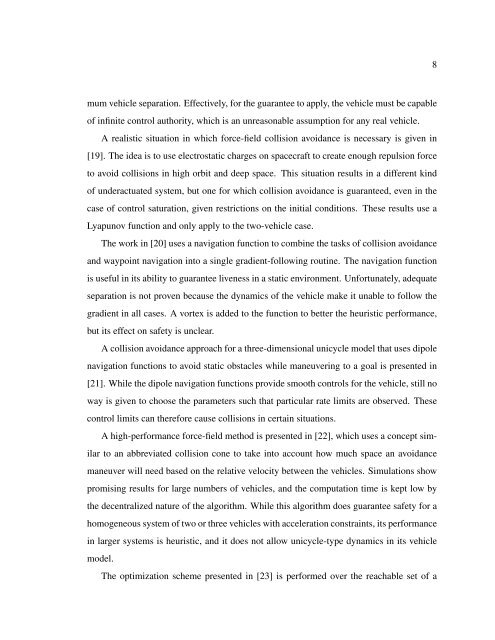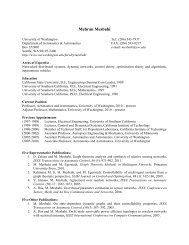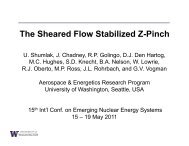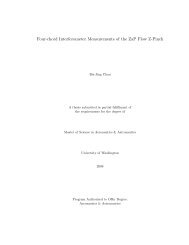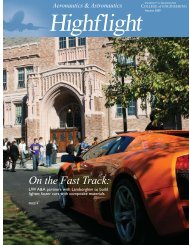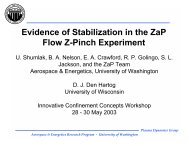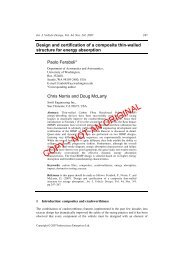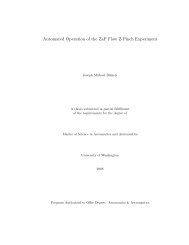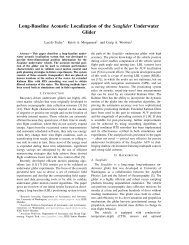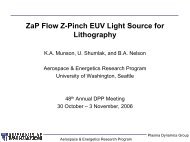Distributed Reactive Collision Avoidance - University of Washington
Distributed Reactive Collision Avoidance - University of Washington
Distributed Reactive Collision Avoidance - University of Washington
You also want an ePaper? Increase the reach of your titles
YUMPU automatically turns print PDFs into web optimized ePapers that Google loves.
8<br />
mum vehicle separation. Effectively, for the guarantee to apply, the vehicle must be capable<br />
<strong>of</strong> infinite control authority, which is an unreasonable assumption for any real vehicle.<br />
A realistic situation in which force-field collision avoidance is necessary is given in<br />
[19]. The idea is to use electrostatic charges on spacecraft to create enough repulsion force<br />
to avoid collisions in high orbit and deep space. This situation results in a different kind<br />
<strong>of</strong> underactuated system, but one for which collision avoidance is guaranteed, even in the<br />
case <strong>of</strong> control saturation, given restrictions on the initial conditions. These results use a<br />
Lyapunov function and only apply to the two-vehicle case.<br />
The work in [20] uses a navigation function to combine the tasks <strong>of</strong> collision avoidance<br />
and waypoint navigation into a single gradient-following routine. The navigation function<br />
is useful in its ability to guarantee liveness in a static environment. Unfortunately, adequate<br />
separation is not proven because the dynamics <strong>of</strong> the vehicle make it unable to follow the<br />
gradient in all cases. A vortex is added to the function to better the heuristic performance,<br />
but its effect on safety is unclear.<br />
A collision avoidance approach for a three-dimensional unicycle model that uses dipole<br />
navigation functions to avoid static obstacles while maneuvering to a goal is presented in<br />
[21]. While the dipole navigation functions provide smooth controls for the vehicle, still no<br />
way is given to choose the parameters such that particular rate limits are observed. These<br />
control limits can therefore cause collisions in certain situations.<br />
A high-performance force-field method is presented in [22], which uses a concept similar<br />
to an abbreviated collision cone to take into account how much space an avoidance<br />
maneuver will need based on the relative velocity between the vehicles. Simulations show<br />
promising results for large numbers <strong>of</strong> vehicles, and the computation time is kept low by<br />
the decentralized nature <strong>of</strong> the algorithm. While this algorithm does guarantee safety for a<br />
homogeneous system <strong>of</strong> two or three vehicles with acceleration constraints, its performance<br />
in larger systems is heuristic, and it does not allow unicycle-type dynamics in its vehicle<br />
model.<br />
The optimization scheme presented in [23] is performed over the reachable set <strong>of</strong> a


